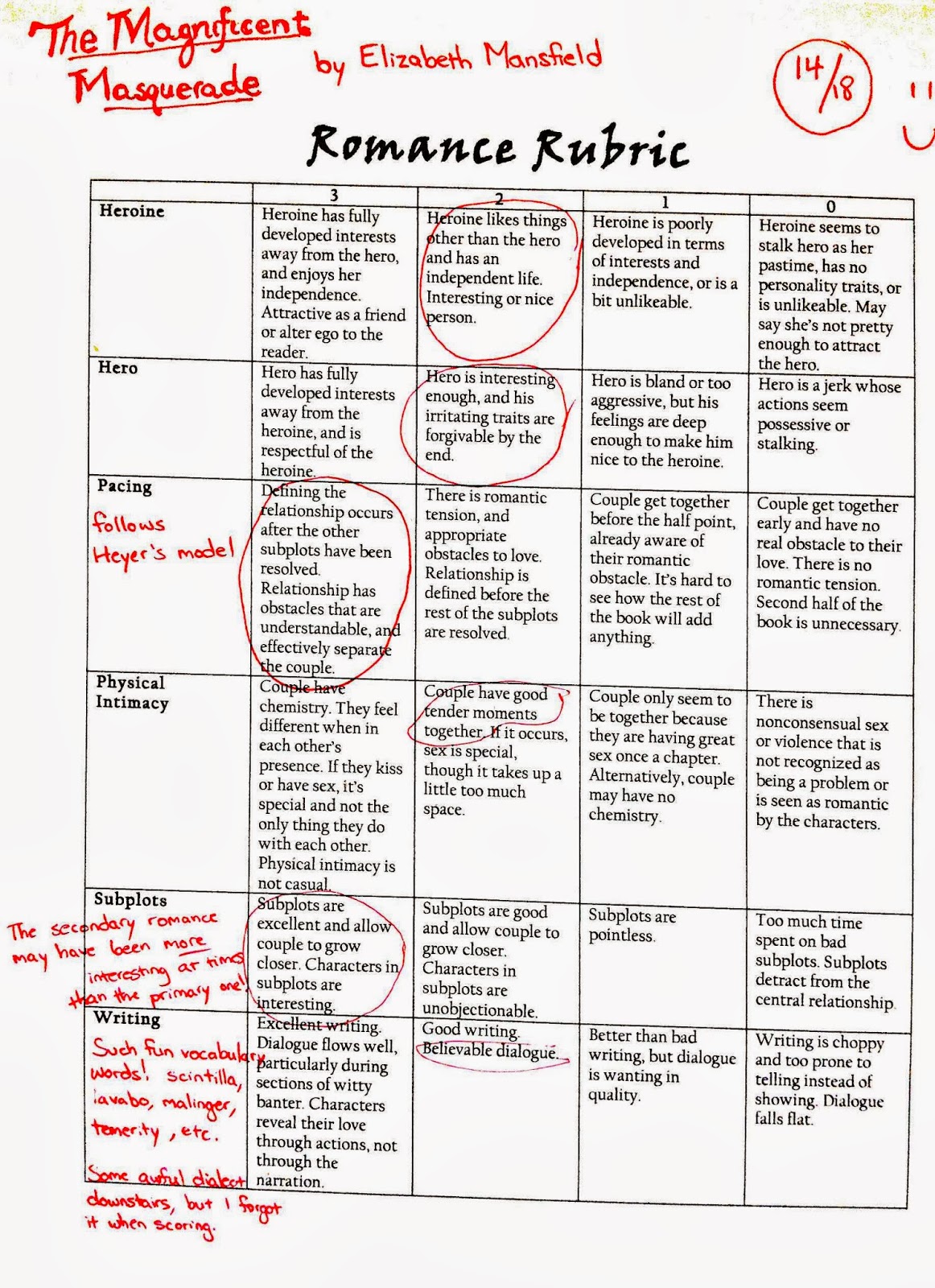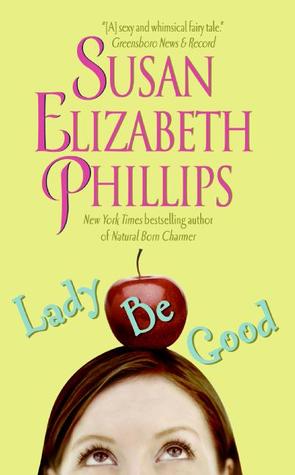Evidently it is true. The closest I came was the “New Adult” Left Drowning, which was so problematic that I couldn’t pick up another pure romance for ages. That is, a few months. But I went to my library book sale this past weekend and found a Regency romance from 1987 among the mass-market paperbacks, and instantly snatched it from a pile of brittle Harlequins.
The Magnificent Masquerade
 Title: The Magnificent Masquerade
Title: The Magnificent MasqueradeAuthor: Elizabeth Mansfield
Publisher: Charter Books
Published: 1987
Read: October 2013
Genre: Regency
Where It Came From: Used book sale
Rating: 3.5 out of 5 Coach Rides
Years ago, in the midst of a much more time-consuming romance novel habit, I happened upon a novel by Fiona Hill, and when I searched for more of her books I found an article she wrote for the New York Times complaining about how tedious it was for an ambitious author like herself to spend her time writing fluffy Regency romances. Far more useful than her message of “I AM A SERIOUS WRITER” was her clarification of what makes a Regency novel different from the standard dime romance: in a Regency, the central characters agree to marry each other after falling in love over banter; consummation is a kiss.
Since the article’s publication in 1989 the Regency has died out as a separate genre, but seeing The Magnificent Masquerade at the book sale reminded me that there once was a time when there were many Regency writers, and many of these books presumably on the shelves of libraries.
I headed home eager to read, and you know what? It was as cute as I had expected. Not brilliant, but completely pleasant like the book equivalent of an ice cream cone.
Here’s our plot: Miss Kitty Jessup, on the verge of adulthood, is a charming jokester who cannot wait to enter society in a few months and dance and flirt with hundreds of eligible young men. Her father, Lord Birkinshaw, isn’t so sure that his daughter’s behavior outside of the schoolroom will be any better than it is inside, and when he hears the Earl of Edgerton complaining about his raucous younger brother, he hits on an excellent idea: Kitty should skip the parties and marry Edgerton’s younger brother because marriage will be a calming influence on both the young people. Kitty, upset that this will ruin all her fun, concocts a plan of her own: on the way to meet her prospective family, she will trade places with the young maid, Emily, who is supposed to be her abigail, and when her unwanted fiancé discover the deception, his family will quickly dissolve the arranged engagement. Having switched places, Kitty and Emily both start to change and desire new things, including husbands neither one of them initially planned to like.
One of the most enjoyable aspects of the book was that I couldn’t figure out which way the pairing was going to work until halfway through. Two young ladies, two brothers: is it opposites attract or like goes to like? Maybe you’re a better reader than I am, and wouldn’t have those pages of slight suspense, but I hope if you read it you have the same thought process as I did.
I also liked the characters, not for any complexity they may have had, but for their ability to fill their roles pleasantly. Basically they’re nice people (even if half are initially self-centered) discovering that they get along well with other nice people. There’s a little servant drama, which should amuse any Downton fan because (a) the butler has the same dialogue downstairs that you’d expect from Carson, and (b) a major confrontation is over the propriety of having a woman wait at the table upstairs.
In all the book is sweet, and makes me wish the fluffy Regency novel still flourished.

Lady Be Good
 Title: Lady Be Good
Title: Lady Be GoodAuthor: Susan Elizabeth Phillips
Publisher: Avon
Published: 1999
Read: October 2013
Genre: Romance
Where It Came From: Used book sale
Rating: 4 out of 5 Golf Balls
Because mass-market paperbacks were three for $1 (and no fraction for a single book), I scoured the rows until I could find two more. JACKPOT. A Susan Elizabeth Phillips romance not on my library’s shelves! Susan Elizabeth Phillips is probably my favorite contemporary romance author, but her work ranges from uncomfortable (the early Glitter Baby) to delightful (basically all the ones written between 2005-2011). Lady Be Good, fortunately, is one of her more enjoyable ones.
Lady Emma Wells-Finch is the devoted headmistress of a small English academy whose patron is a sleazy twice-married duke desperate for an heir, and willing to coerce Emma into marrying him. Claiming research obligations she travels to Texas, where she is met by a friend of a friend, Kenny Traveler, and promptly plans to sully her reputation enough to make the duke reconsider his choice of bride. Kenny, a suspended pro-golfer escorting Emma as a personal favor to get him back on the PGA tour, finds keeping Emma out of trouble is more amusing than he expected, but his real wish is to get back to the understandable world of golf.
Susan Elizabeth Phillips generally works this successful formula: spunky woman on a break from her life travels or lives with a pro-athlete or actor long enough for them to fall in love and heal their childhood scars and get past their insecurities. I think there’s usually a secondary romance as well; I remember a few with the hero’s mother getting some action. Lady Be Good completely fits into the formula, and that’s a good thing because that means that if you like any of her others that fit the formula, you’re guaranteed to like this one. Conversely, if you enjoy this one, there are more for you to read after!
More than variations of the same cheerful plot, Phillips is particularly good at hooking readers from the first chapter. Unlike Georgette Heyer (and her school of Regency writers), Phillips wastes no time on exposition. Literally we get three pages to establish that Kenny is a pro-golfer with an easy manner before he meets Emma and decides she’s a nuisance, but a nuisance he’d like to sleep with because it’s a romance novel and that’s how these things go. Once we know all that, all that’s left to do is keep flipping pages to figure out how two commitment-phobic people will persuade themselves to be in a serious relationship.
Along the way there are funny-awkward situations, awkward-awkward situations, a welcoming and supportive family (albeit with some issues from decades earlier), and the romance of Kenny’s sister with her father’s business rival’s son. (Everyone in Phillips’ world is related to someone else anyway, so don’t be put off by the multiple possessive apostrophes here.) Frothy fun.
To get to frothy fun you almost always have to have an inconceivable plot premise, and this one feels a little more unrealistic than usual. One arranged marriage with English nobility in 1999 raises eyebrows, a second arrangement in Texas in the same book is just silly. I think Phillips figured out a much more plausible way for modern arranged marriage to enter the plots of her more recent Natural Born Charmer and What I Did for Love, but as long as you can get past the set up here, it's hard to stop reading.








No comments:
Post a Comment